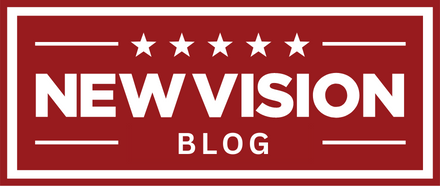The concept of security extends far beyond physical locks and keys into the complex realm of digital information. Among the myriad of concerns that accompany our online activities, identity theft stands out as a particularly insidious threat. This form of cybercrime, which involves unauthorized access and use of personal data, can have devastating effects, especially on students who are just beginning to build their digital footprints. This article aims to shed light on the importance of robust password practices as a fundamental step in safeguarding against identity theft, offering practical advice for students to protect their digital selves effectively.
What Is Identity Theft?
Identity theft is not a mere inconvenience; it’s a violation that can disrupt lives, finances, and future opportunities. For students who may not always have extensive financial resources, the impact can be particularly acute, affecting everything from student loans to securing a Paperwriter. The mechanism of identity theft is deceptively simple: thieves need access to your personal information.
Yet, the pathways to such access are myriad, ranging from sophisticated hacking techniques to phishing scams. Recent statistics have painted a worrying picture, showing a marked increase in the incidence of identity theft among young people, underscoring the urgent need for heightened vigilance and improved personal security practices.
The Role of Passwords in Digital Security
Passwords are the guardians at the gate of our digital identities, the first line of defense against the prying eyes of cybercriminals. However, the strength of this defense is often undermined by common pitfalls in password creation and management. Many students, pressed for time and juggling numerous online accounts, resort to using simple, easily guessable passwords or, worse, the same password across multiple sites.
This practice significantly amplifies the risk of identity theft, as a single compromised password can potentially unlock a treasure trove of personal information. The psychology behind choosing weak passwords frequently stems from a desire for convenience, but the consequences—ranging from unauthorized access to personal accounts to full-blown identity theft—can be severe and long-lasting.
Principles of Strong Password Creation
The foundation of digital security is a strong, unguessable password. A robust password should be a complex blend of letters (both uppercase and lowercase), numbers, and symbols, extending to at least 12 characters in length. Such complexity ensures that brute-force attempts to crack the password will be time-consuming and, ideally, unfeasible. Additionally, it’s crucial to avoid using personal information, such as birthdates or names, as part of your passwords, as these are easily accessible to determined cybercriminals.
To manage the challenge of remembering multiple complex passwords, students can turn to password managers—secure applications designed to store and protect passwords under one master password. These tools not only relieve the burden of memorization but also often include password generation features, ensuring that each account is protected by a unique and strong password. Furthermore, adopting mnemonic devices, where a pattern or phrase helps recall a password, can be an effective strategy for those who prefer not to use a password manager.
Beyond Passwords: Multi-Factor Authentication
While a strong password is an essential first step, it’s not an impregnable defense. Multi-factor authentication (MFA) significantly enhances security by requiring additional verification steps before access is granted. MFA is based on the principle that access should not rely solely on something you know (like a password) but also on something you have (like a smartphone or a security token) or something you are (like a fingerprint or facial recognition). By implementing MFA, even if a password is compromised, unauthorized users are unlikely to bypass the second layer of security, keeping your digital identity safer.
Many educational platforms and social media sites now offer MFA options, and students are strongly encouraged to enable these features wherever possible. While it may add an extra step to the login process, the added layer of protection it provides is invaluable in safeguarding personal and sensitive information from potential identity theft.
Staying Vigilant: Recognizing and Avoiding Phishing Attacks
Phishing attacks, in which malicious actors attempt to trick individuals into revealing personal information or login credentials, represent a significant threat to digital security. These attacks often take the form of seemingly legitimate emails or messages urging the recipient to click on a link or download an attachment. Educating oneself on how to recognize these attempts is crucial in preventing identity theft.
Key indicators of phishing attempts include unsolicited requests for personal information, misspelled URLs, and generic greetings. It’s essential to verify the authenticity of any request by contacting the organization directly through official channels. Moreover, installing and regularly updating antivirus software can provide an additional layer of defense by identifying and blocking malicious content.
Regular Monitoring and Response
Consistent monitoring of your financial and digital accounts for any unauthorized activity is a critical habit for safeguarding against identity theft. Early detection can significantly mitigate the damage caused by identity theft, enabling quicker response and recovery actions. Students should regularly review their bank statements, credit reports, and important digital accounts, looking out for any transactions or activities they did not initiate.
If you suspect your identity has been compromised, it’s crucial to act swiftly. This includes changing your passwords immediately, contacting your bank and credit card issuers, and reporting the theft to the relevant authorities, such as the Federal Trade Commission in the United States. Many institutions also offer guidance and assistance to victims of identity theft, helping them navigate the recovery process.
Takeaway
In the digital age, protecting one’s identity online is more critical than ever, particularly for students who are building their futures in an increasingly connected world. By embracing strong password practices, enabling multi-factor authentication, staying vigilant against phishing attempts, and regularly monitoring account activity, students can significantly reduce their risk of identity theft.
Remember, the key to digital security is not just in asking, “Who can write my essay?” but in understanding and implementing effective strategies to safeguard your digital identity. As we continue to navigate the complexities of the online realm, let us commit to staying informed, vigilant, and proactive in our approach to digital security, ensuring that our digital selves are just as protected as our physical selves.
Since 2014 I have been writing about tech and helping others to fix tech issues related to Android, Windows, iOS, Chromebook, and more.
I love to help others to fix any technical issues they might be facing.








![Countries That Banned TikTok [2024 List] India](https://www.newvisiontheatres.com/wp-content/uploads/2023/08/India--200x114.jpg)